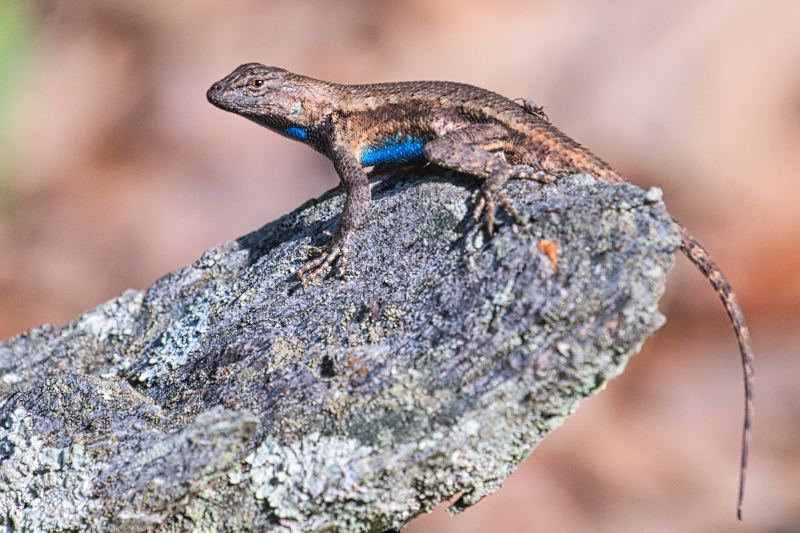I found this Prairie Lizard photography opportunity right on my property near the Ouachita National Forest. The male lizard sat perfectly still on a log pile while a tiny spider crawled across its back. However, the lizard seemed more interested in watching me than its potential meal.

Prairie Lizard Habitat and Behavior
Prairie Lizards love sunny spots for basking. I’ve photographed them countless times in this same log pile area. The fallen timber creates perfect hiding spots and warm surfaces for these small reptiles.
This male shows bright blue coloring on his sides. That’s breeding season behavior, which peaks in spring and early summer. Additionally, his focus on me instead of the spider suggests territorial instincts or simple curiosity about my camera.
Prairie Lizards eat insects and spiders regularly. However, this one ignored its hitchhiker completely.
Photographing Prairie Lizards Successfully
Prairie Lizard photography requires patience and the right approach. I use a telephoto lens to keep my distance. Fast shutter speeds work best since these reptiles move quickly when startled.
Focus on the eyes first. Sharp eye focus brings life to reptile photos. Additionally, I often underexpose slightly in bright sunlight to preserve detail in their textured scales.
The key is moving slowly and letting them get comfortable with your presence. Early morning and late afternoon provide the best lighting for Golden Hour Wildlife Photography.
Ouachita National Forest Wildlife Haven
The Ouachita National Forest spans 1.8 million acres near my property. This massive forest creates ideal conditions for Prairie Lizard photography and other wildlife observation.
Sunny clearings with fallen logs attract these reptiles consistently. The forest’s mix of hardwood and pine habitats supports diverse prey species. Therefore, areas near the forest edge often provide the best photography opportunities.
